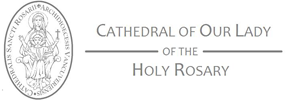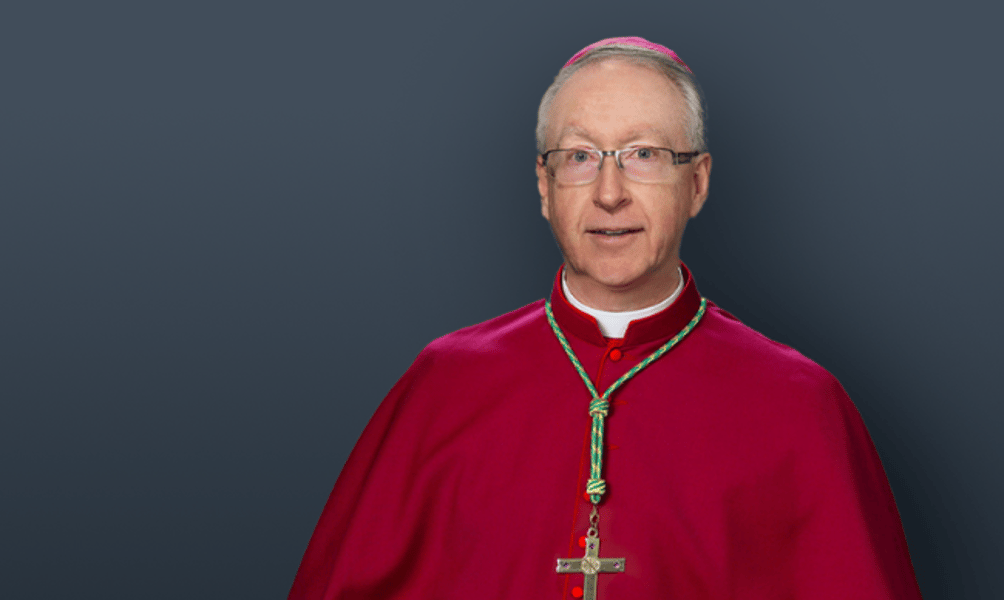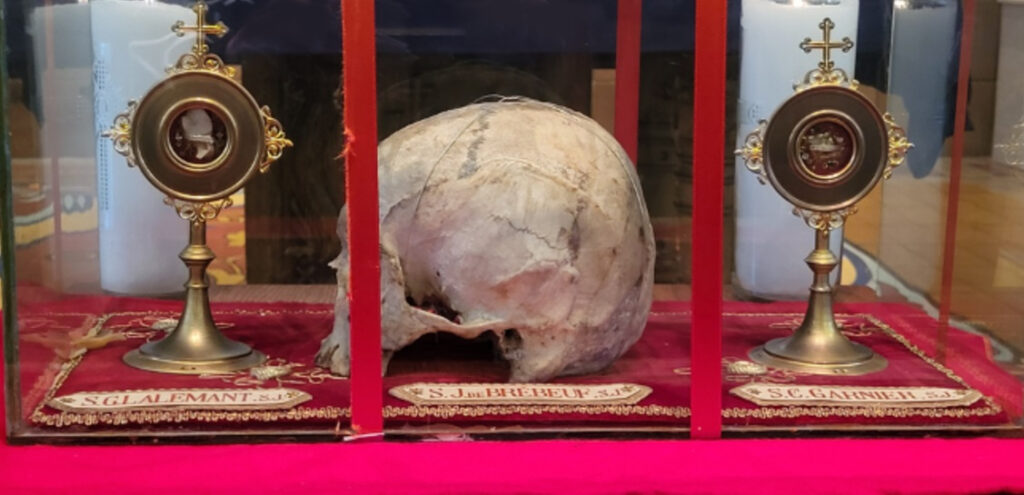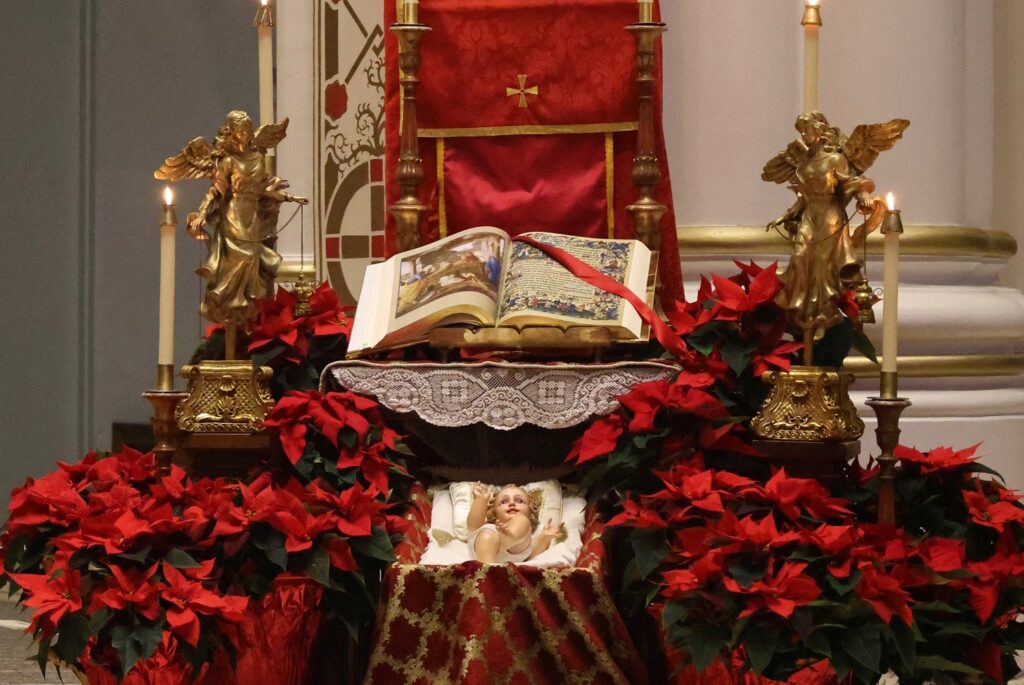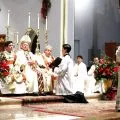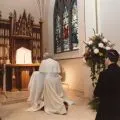The tradition of iconography is part of the patrimony of the Catholic Church. It is passed on by the visual quotation of images dating back to St. Luke, the first Christian iconographer. Our new crucifix is a continuation of this tradition.
The Holy Rosary Crucifix was commissioned by Archbishop Miller in 2015 to aid the faithful in focussing their attention on the Eucharist, the source and summit of our faith. He requested that it be in the Romanesque style of the eleventh to thirteenth centuries.
In this tradition Our Lord is portrayed affixed to the cross, His eyes open, triumphant over death, standing in a position which reminds us of the orans posture of the priest. This type is sometimes referred to as “Christus Triumphans”. An excellent example of this style is the cross before which St. Catherine of Siena received the stigmata. While studying in Italy, the iconographer saw a modern version of The Cross of the Stigmata of St. Catherine by his master, don Gianluca Busi, a priest of the Archdiocese of Bologna. A ‘quotation’ of this corpus was the basis for the design of the Holy Rosary Crucifix. The crown of thorns, now common on crucifixes, was not shown in crucifixes of this period. This was introduced in the thirteenth century.
Another feature of the Romanesque style is the use of bright colours to represent the cross itself. This is done to emphasize the spiritual significance of the cross. The azurite blue used here evokes thoughts of heaven and ties the cross visually to the blues of the sanctuary. Azurite is one of the most precious natural pigments, and therefore eminently suitable for the task.
Above Our Lord’s arms are the abbreviations which look like IC and XC. They are the first and last letters of IHCOYC,(Jesus), and XPICTOC, (Christ). On His halo are the letters Ό ωΝ which mean He Who Is, or the name of God, a clear
statement of His divinity.
The two subsidiary figures, Our Lady and St. John, are represented at half the scale of Our Lord. This emphasizes the centrality of Christ’s passion, death and resurrection. The inscription above Mary’s shoulder is a Greek abbreviation for Mother of God. Her inner garment is blue-green, representing her humanity, the outer a rich wine red, representing her being clothed in divine grace. The red of the outer garment contains hematite collected in Marathon, Ontario, and the
highlights contain red ochre from the soil of Mother Angelica’s convent in Alabama. The inscription above John means The Holy John, or simply, St. John. Surrounding the cross are 223 beads forming a rosary including the Joyful, Sorrowful, Glorious and Luminous Mysteries.
The wood of the cross is approximately 4cm thick Baltic birch plywood trimmed with 2 cm x 7.5 cm solid oak. It was constructed by Darrell Doering of Holy Family Parish. It is painted in egg tempera, the traditional medium of iconography. Fifteen books, or approximately 6000 square inches, of 22K gold, was used in the creation of this crucifix. On the back is a 1/4” stainless steel plate supporting the eye bolts used for hanging; it is adorned with the first words of the Gospel Acclamation for the Feast of the Exaltation of the Holy Cross, “Adoramus Te Christe”, We adore you, O Christ, (and we bless you; because by your cross you have redeemed the world.)
This humble description of the properties of the cross is meant to be of some assistance to those who seek to understand it better, but the best way to come to know the cross is to spend some time looking upon it and allowing Our Lord to speak to
us through His image.
